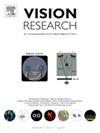Measuring contrast processing in the visual system using the steady state visually evoked potential (SSVEP)
IF 1.4
4区 心理学
Q4 NEUROSCIENCES
引用次数: 0
Abstract
Contrast is the currency of the early visual system. Measuring the way that the computations underlying contrast processing depend on factors such as spatial and temporal frequency, age, clinical conditions, eccentricity, chromaticity and the presence of other stimuli has been a focus of vision science for over a century. One of the most productive experimental approaches in this field has been the use of the ‘steady-state visually-evoked potential’ (SSVEP): a technique where contrast modulating inputs are ‘frequency tagged’ (presented at well-defined frequencies and phases) and the electrical signals that they generate in the brain are analyzed in the temporal frequency domain. SSVEPs have several advantages over conventional measures of visually-evoked responses: they have relatively unambiguous ouput measures, a high signal to noise ratio (SNR), and they allow us to analyze interactions between stimulus components using a convenient mathematical framework. Here we describe how SSVEPs have been used to study visual contrast over the past 70 years. Because our thinking about SSVEPs is well-described by simple mathematical models, we embed code that illustrates key steps in the modelling and analysis. This paper can therefore be used both as a review of the use of SSVEP in measuring human contrast processing, and as an interactive learning aid.
用稳态视觉诱发电位(SSVEP)测量视觉系统的对比度加工
对比是早期视觉系统的货币。一个多世纪以来,测量对比度处理的计算方式取决于诸如空间和时间频率、年龄、临床状况、偏心率、色度和其他刺激的存在等因素,一直是视觉科学的焦点。该领域最有成效的实验方法之一是使用“稳态视觉诱发电位”(SSVEP):这种技术将对比度调制输入“频率标记”(以明确定义的频率和相位呈现),并在时间频域中分析它们在大脑中产生的电信号。与传统的视觉诱发反应测量方法相比,ssvep有几个优点:它们具有相对明确的输出测量方法,高信噪比(SNR),并且它们允许我们使用方便的数学框架分析刺激成分之间的相互作用。在这里,我们描述了在过去的70年里,ssvep是如何被用来研究视觉对比的。因为我们对ssvep的思考可以用简单的数学模型很好地描述,所以我们嵌入了说明建模和分析中的关键步骤的代码。因此,本文既可以作为SSVEP在测量人类对比处理中的使用的回顾,也可以作为交互式学习辅助工具。
本文章由计算机程序翻译,如有差异,请以英文原文为准。
求助全文
约1分钟内获得全文
求助全文
来源期刊

Vision Research
医学-神经科学
CiteScore
3.70
自引率
16.70%
发文量
111
审稿时长
66 days
期刊介绍:
Vision Research is a journal devoted to the functional aspects of human, vertebrate and invertebrate vision and publishes experimental and observational studies, reviews, and theoretical and computational analyses. Vision Research also publishes clinical studies relevant to normal visual function and basic research relevant to visual dysfunction or its clinical investigation. Functional aspects of vision is interpreted broadly, ranging from molecular and cellular function to perception and behavior. Detailed descriptions are encouraged but enough introductory background should be included for non-specialists. Theoretical and computational papers should give a sense of order to the facts or point to new verifiable observations. Papers dealing with questions in the history of vision science should stress the development of ideas in the field.
 求助内容:
求助内容: 应助结果提醒方式:
应助结果提醒方式:


